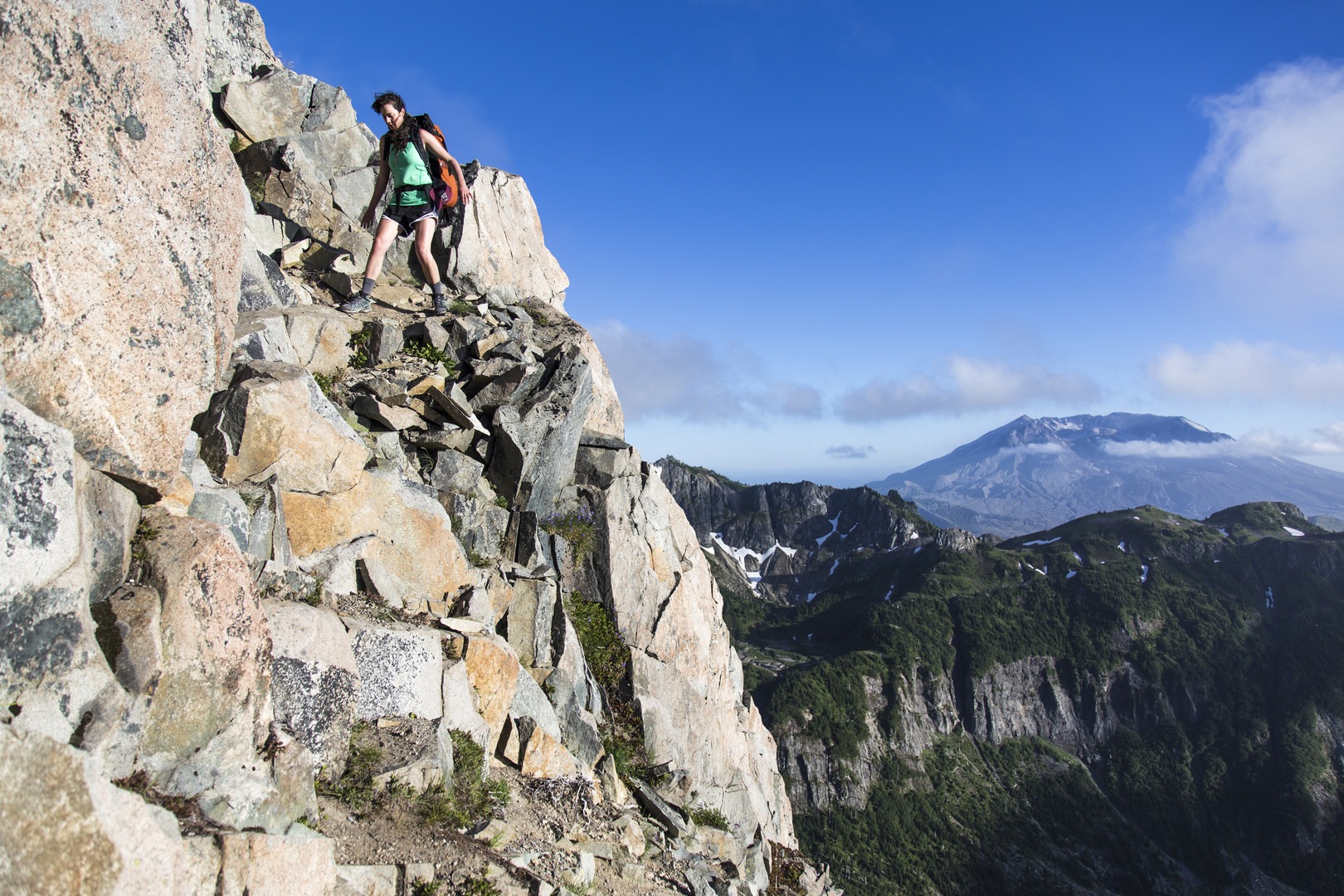The Mount Margaret backcountry offers some unique opportunities to view a young Northwest forest in a stage of regrowth. This area was devastated by the pyroclastic blast when Mount St. Helens erupted in May, 1980; the destructive cloud leveled all trees and foliage in the area and dramatically changed the landscape. The Whittier Ridge Trail follows a sharp ridge within this destruction zone and offers outstanding views of the area, but it is much more challenging than the neighboring Mount Margaret summit.
Whittier Ridge is a 2-mile section of unmaintained ridge trail that spans between Mount Margaret and the Mount Margaret Backcountry Lakes. A loop can be created using Whittier Ridge as the connector, though the loop is a strenuous 14.2 miles with over 2,000 feet of elevation gain. Due to the close proximity to the Mount Margaret summit, it is convenient to combine the two in a single trip. The entire trip can be completed in a long day trip or with an overnight stay at some of the backcountry lake camp sites. These permits must be reserved in advance.
From the Mount Margaret via Norway Pass Trail, follow signage to the right that indicates the start of Whittier Ridge Trail. The signage here indicates the "Most Difficult" trail rating, which convinces most hikers to turn back. This alert is to be respected, but with careful navigation and sure-footedness this trail will reward visitors with some of the best views in the region.
Due to the remote access, wildlife is abundant in the area. Deer and elk can be seen in the surrounding meadows, and mountain goats are visible on the ridge. Be careful not to surprise wildlife that may be on trail.
The trail itself follows the spine of the ridge. When trail conditions prove difficult to follow, the answer is often to look up. Although no rated climbing is required, some small scrambling and traversing across narrow ledges is required.





















Comments
The north half of Whittier Ridge is a little more trail-like, but the worst part for me by far was hiking down steep scree over dirt trail- where I relied on my single trekking pole and accompanying trees for a "veggie belay" so I didn't fall to the valley floor. Near the north end of the ridge, there is a very convincing goat trail that leads you to the left instead of the incredibly sketchy (but correct) trail that goes straight up the boulder ridge, and we mistakenly took this goat trail and ended up in a meadow far off-route. Once topping the ridge again we realized our mistake and caught the trail that goes to Snow Lake to lead us back to the saddle just before the Shovel Lake junction.
Hiking to Panhandle Lake was a breeze (and luckily for us there was a literal breeze- we were so hot!) and the lake provided a perfect swimmable respite. The 9 miles of Day 1 took 8 hours. The next day hiking out from Panhandle Lake was a steep climb up and over Bear Pass and down the other side back to Norway Pass, 7 miles of which we accomplished in about 3.5 hours.
This is far and away my favorite trail at MSH, though it is not for the faint-of-heart, those with vertigo or a fear of heights, or anyone that isn't a *very* confident scrambler/hiker.
Sign In and share them.